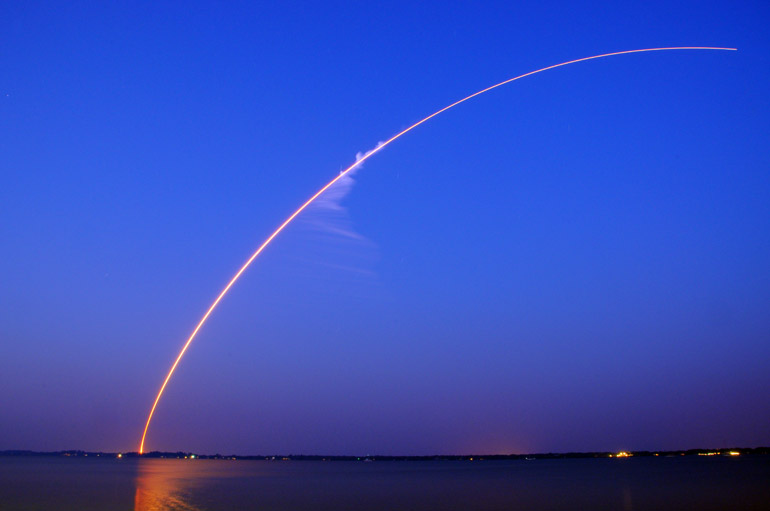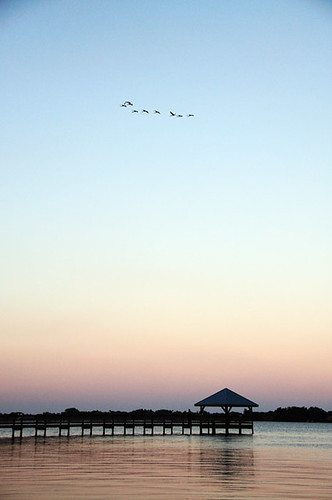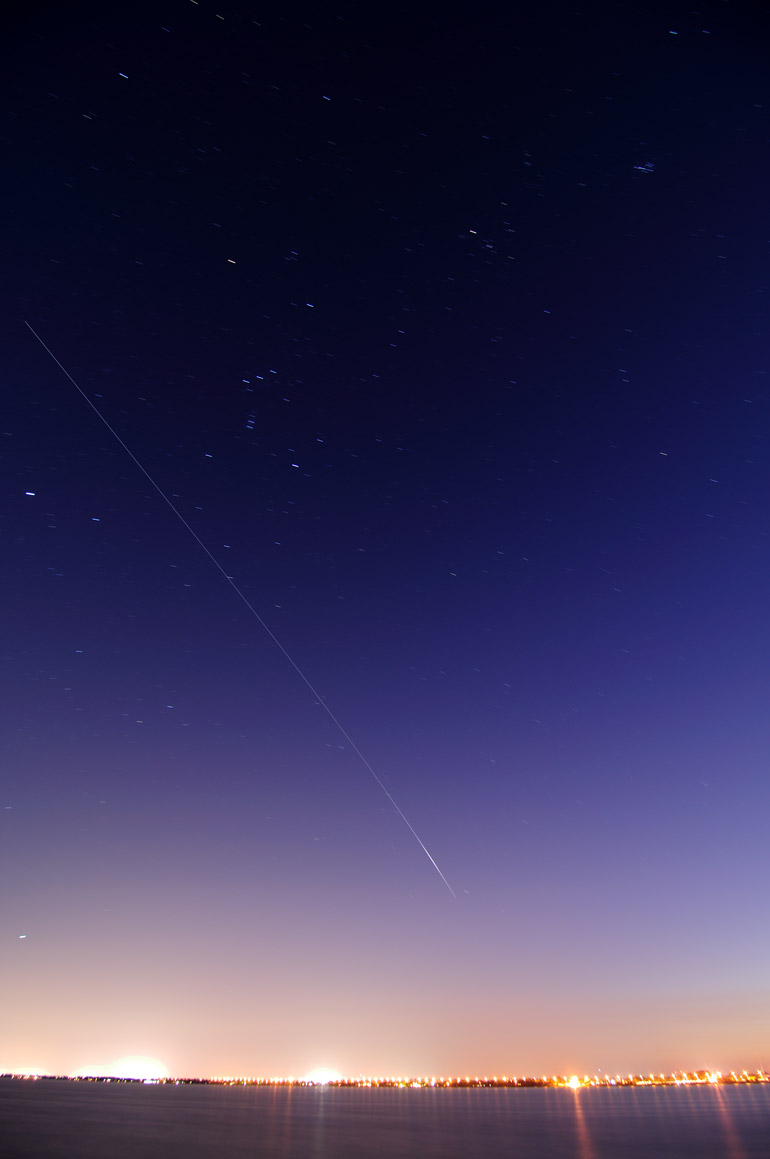
Purchase a print | With traces of sunlight still bouncing off particles in the atmosphere, a sky-blue color lingered for the duration of this 3-minute, 40-second exposure of a Delta IV rocket launch Thursday. Liftoff was at 6:57 p.m., with sunset at 6:25 at this location along the Indian River in Palm Shores. There was also wildfire smoke drifting over the water. More about the exposure: the aperture was closed to its smallest, f/22, and the ISO was on its lowest, 100.
Posting on The Offlede has been sparse recently, mostly because I've been tending to the aspects of my life that I've neglected in the past year. The utmost of these, in no particular order, are books, family and country music. Another, baseball, will lead to a few posts in the coming weeks, as spring training is now in full swing. Unfortunately, my Harley-Davidson will continue to get the cold shoulder if this frigid weather persists.
This post, though, has a theme: streaks of heavenly - or soon to be heavenly - light.
 First, let's start with the last event of the week: the launch of a Delta IV rocket carrying a weather satellite to be used by the National Oceanic and Atmospheric Administration. TV news and National Weather Service meteorologists will employ images from this GOES-P (which has induced many urinary snickers in the newsroom over the past week) satellite in devising forecasts.
First, let's start with the last event of the week: the launch of a Delta IV rocket carrying a weather satellite to be used by the National Oceanic and Atmospheric Administration. TV news and National Weather Service meteorologists will employ images from this GOES-P (which has induced many urinary snickers in the newsroom over the past week) satellite in devising forecasts.Flying in the medium configuration with two solid rocket boosters - which provide more flame, exhaust and ascent force than a bare rocket - the vehicle was expected at 6:17 p.m. Thursday to make an arc of contrail that would be lit up by the setting sun. But a strong wind pushed back that attempt to 6:57 p.m., with dusk befalling the Space Coast. I determined that it was dark enough to attempt a long exposure of the rocket's flame arcing over the Indian River, near my workplace.
(The image at left shows the lighting conditions at 6:17 p.m., as a V of geese flies north just before sunset. That first launch time also would have made for an interesting shot, though the amount of sunlight ruled out a long exposure.)
Adding a splash of uniqueness to this launch was the smoke from a wildfire in Palm Bay, about 20 minutes to the south. It hung in the air like a light fog or a thick smog on a hot day. Conditions were otherwise clear and cold, like they have been for most of this odd Florida winter.
Over 3 minutes, 40 seconds, this exposure shows a blue sky and a redder than normal flame trail from the rocket - redder than normal because of the smoke. This was my second nighttime Delta IV launch from this riverside location, so I knew exactly where to point the camera, resulting in a nicely framed, 18mm shot. (For my first time, I zoomed in too closely and cut off the arc.)

For some reason, the sunlight reflecting off the International Space Station shined more brilliantly at the very beginning of the flyover. Typically, the station's glow grows in intensity as it gets higher in the sky (in this case Monday, its apex was 54 degrees in relation to the horizon).
In the other streak this week, the International Space Station cut through the sky Monday evening, taking about four minutes to cross from the southwestern sky to the northeastern horizon.
The exposure I made of the flyover is the longest I've yet to attempt: 2 minutes, 20 seconds, more than half of the station's appearance. Unlike a rocket and shuttle engine, the reflecting sunlight off the space station is dim - more like a bright, slow-moving star. Such a faint point of light requires a wide aperture so that the camera takes in enough light to register on its sensor. Got it?
My fear while the shutter was open so long at f/4 was that the image would come out overexposed, especially from the ambient light along the Indian River in Palm Shores. That didn't happen. But the result was the light from the dusky sky overpowering the streak from the space station. That's why it's rather difficult to see in this image, which is rather unremarkable.



4 comments:
Post a Comment